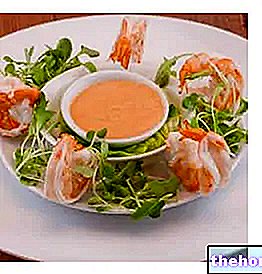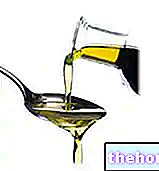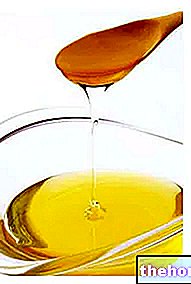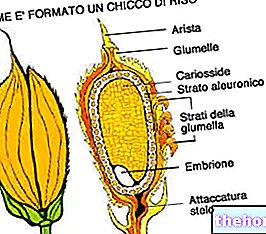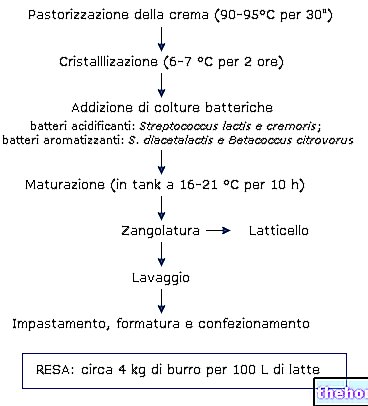Introduction: the olive oil
Olive: botanical aspects and cultivation
Composition of the ripe olive, nutritional properties
Olive harvest
Olive oil: chemical composition
Olive oil: properties and nutritional characteristics
Preparation of the olive oil
Conservation of olive oil
Pomace oil
Classification of olive oils, analysis and fraud
Olive oil as a laxative
Olive tree in herbal medicine - sea buckthorn
Recipes with extra virgin olive oil
Cosmetic use: olive oil - Olive oil unsaponifiables - Olive leaf extract
Olive oil is a typical food of the Mediterranean area, an ancient and valuable product, subject, due to its high economic value, to many types of sophistication.

According to Italian law, olive oil is:
"product obtained by pressing the fruits of Olea europea (Fam. Oleaceae)"
Initial insights: botanical characteristics of the olive tree and nutritional characteristics of the olive
Nutritional properties of olive oil
Olive oil, the main food of the Mediterranean diet, is the absolute favorite condiment both raw and for cooking. Its high smoke point (210 ° C for extra virgin olive oil) makes it one of the most suitable for frying. However, olive oil has a very high energy value (899 Kcal per 100 grams) and for this reason, despite its beneficial properties, it is best not to abuse it. In particular, especially in the case of obesity and overweight, it is recommended to dose it with a spoon or with a teaspoon, respecting the doses foreseen by the food program.

In fact, oleic acid reduces LDL-cholesterol levels without affecting the percentage of HDL-cholesterol. This fatty acid, although not essential, is therefore very important for our well-being. Oleic acid is found in numerous condiments. of vegetable origin and especially in the olive oil which, also for this reason, represents one of the best condiments to be used in the kitchen.
CONTENT OF FATTY ACIDS PER 100 GRAMS OF FOOD
Classification of olive oils
obtained from the mixture of refined olive pomace oil and virgin olive oil, other than lampante, with acidity not exceeding 1%
Uses
Olive oil is mainly used as a food, but also in therapy for its laxative and cholecystokinetic properties, as a hepatoprotector, against gastric ulcer and as a local emollient. The decoction of leaves and bark is used to fight rheumatism, fever, gout, arterial hypertension, hemorrhoids and to disinfect sores and wounds.
See also: oleocanthal, the pain-relieving properties of olive oil.
In the pharmacy it becomes part of liniments, ointments and ointments.
In the cosmetic field, olive oil is used to make soaps, where the last product of the pressing is used. The esters contained in the olive oil treated with caustic soda or carbonates, saponify by breaking down into glycerin and alkaline salts of fatty acids, ie soaps. Pure Marseille soap should in fact be a soda soap.
The pits of olives are an excellent fuel, economical and above all ecological, since the amount of CO2 emitted during combustion is the same as released during natural decomposition. The stones therefore represent an "important energy resource for the countries producing and exporting olive oil. In Madrid the exploitation of this energy source has already begun and still provides heat and hot water to various homes.
PREPARATION OF OLIVE OIL: classic method
The olives are harvested when they are ripe, by placing nets under the foliage and beating or picking the olives by hand or with rakes (ABBACCHIATURA).
Then the olives are collected in jute bags (about 1 quintal) and taken to the mill, where they are placed in washing tanks and then pressed.
This is carried out in large circular vats in which the olives are placed and on which the GRINDSTONES, two or three large granite wheels, which, crushing the fruits, give a dense pulp after about an hour.
At this point the pulp must be mixed, then spread on circular donuts, which are interspersed with metal discs, all inserted on a central cylinder. This apparatus is subjected to mechanical PRESSING which produces the fall of oil drops together with water. The last step involves the SEPARATION of the water from the oil, which is nice green or clear (depending on the quality of the olives, the growing area, and the quantity of leaves that may be present: the greener the oil is not necessarily the better it is.) Alternatively, you can use a continuous cycle machine (centrifugation), which gives higher yields, but oil with lower organoleptic characteristics.
To learn more about the olive oil extraction techniques, see the dedicated articles:
OLIVE HARVEST
TECHNIQUES OF EXTRACTION OF OLIVE OIL
by pressure
by centrifugation
by percolation by selective filtration
STORAGE
The "olive oil" must be stored in dark glass bottles or tin, away from light and heat sources. If the container is intact and well sealed, the olive oil it contains remains unaltered for about 18 months. Once opened, it should be consumed within the year.A genuine and high quality olive oil, if kept in a cold environment, becomes rather dense but no less palatable. If the olive oil is cloudy and dense due to the lack of filtration, the storage times of the product are lowered and the oil can more easily go rancid.
When buying an olive oil it is important to carefully evaluate the price of the product as the traditional parameters of genuineness and value (green color and opacity) can be artificially reproduced by avoiding filtration and dyeing the oil with chlorophyll.
To evaluate the quality of an olive oil one can rely on the acidity value, the lower the better the quality of the product. On the other hand, it is not necessary to trust promotional writings sponsoring the low acidity of olive oil without clearly specifying its real value. Finally, the consumer can count on the rigorous controls that in theory have been carried out on organic olive oils and on those with IGP, PDO and TSG certification.
Other Foods - Oils and Fats Peanut Butter Cocoa Butter Butter Greaves Wheat Germ Animal Fats Margarine Vegetable Cream Tropical Oils and Fats Frying Oils Vegetable Oils Peanut Oil Borage Oil Rapeseed Oil Krill Oil Poppy Seed Oil Seed Oil Pumpkin Avocado oil Hemp oil Safflower oil Coconut oil Cod liver oil Wheat germ oil Linseed oil Macadamia oil Corn oil Almond oil Hazelnut oil Walnut oil Olive oil Palm oil fish Rapeseed oil Rice oil Pomace oil Seed oil Soybean oil Grapeseed oil Extra virgin olive oil Sesame seeds and sesame oil Lard OTHER ARTICLES OILS AND FATS Categories Food Alcoholics Meat Cereals and derivatives Sweeteners Sweets Offal Fruit Dried fruit Milk and Derivatives Legumes Oils and Fats Fish and fishery products Salami Spices Vegetables Health recipes Appetizers Bread, Pizza and Brioche First courses Seconds pi acts Vegetables and Salads Sweets and Desserts Ice creams and sorbets Syrups, liqueurs and grappa Basic Preparations ---- In the Kitchen with leftovers Carnival recipes Christmas recipes Light diet recipes for Celiacs Recipes for Diabetics Recipes for Holidays Recipes for Valentine's Day Recipes for Vegetarians Protein Recipes Regional Recipes Vegan Recipes


